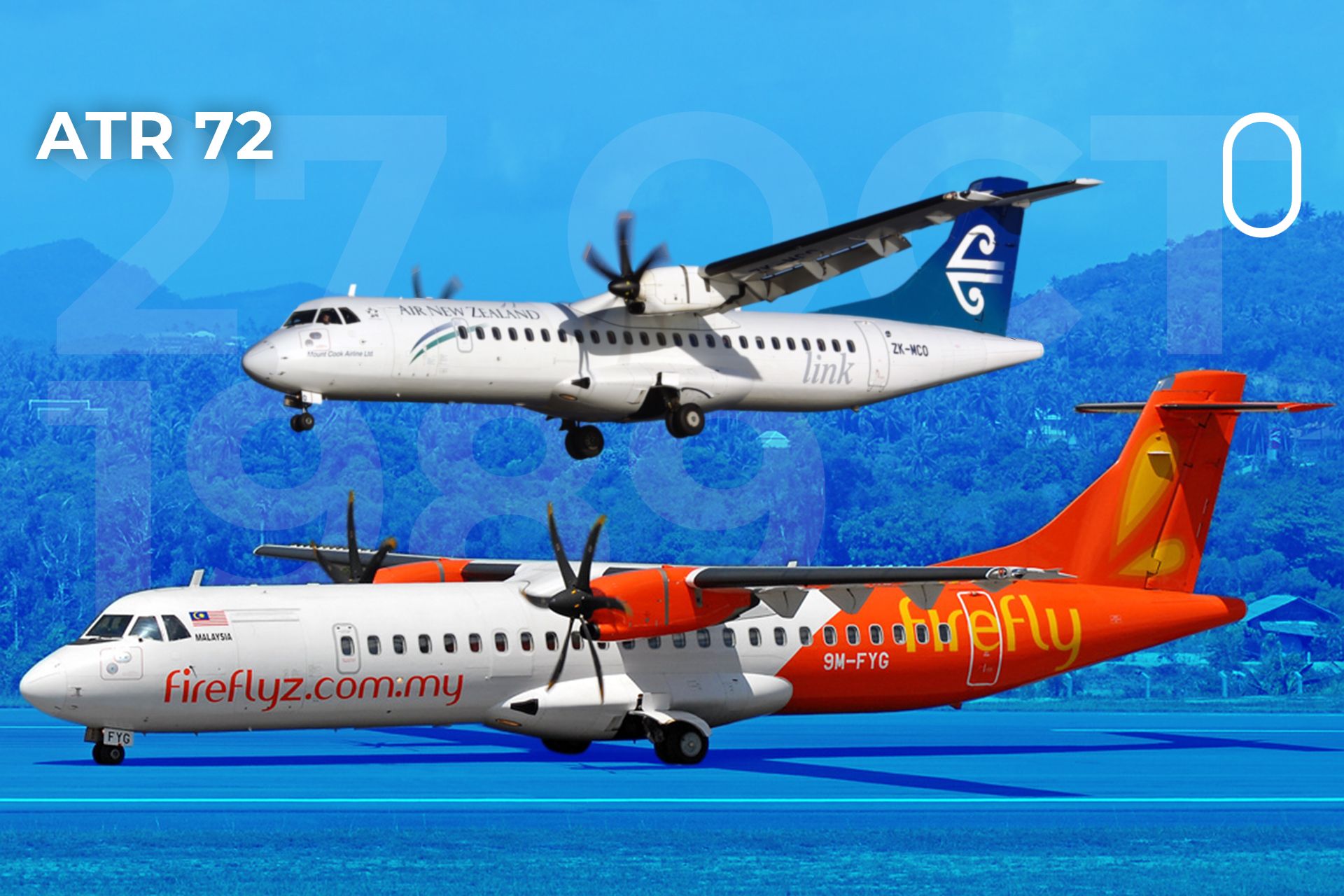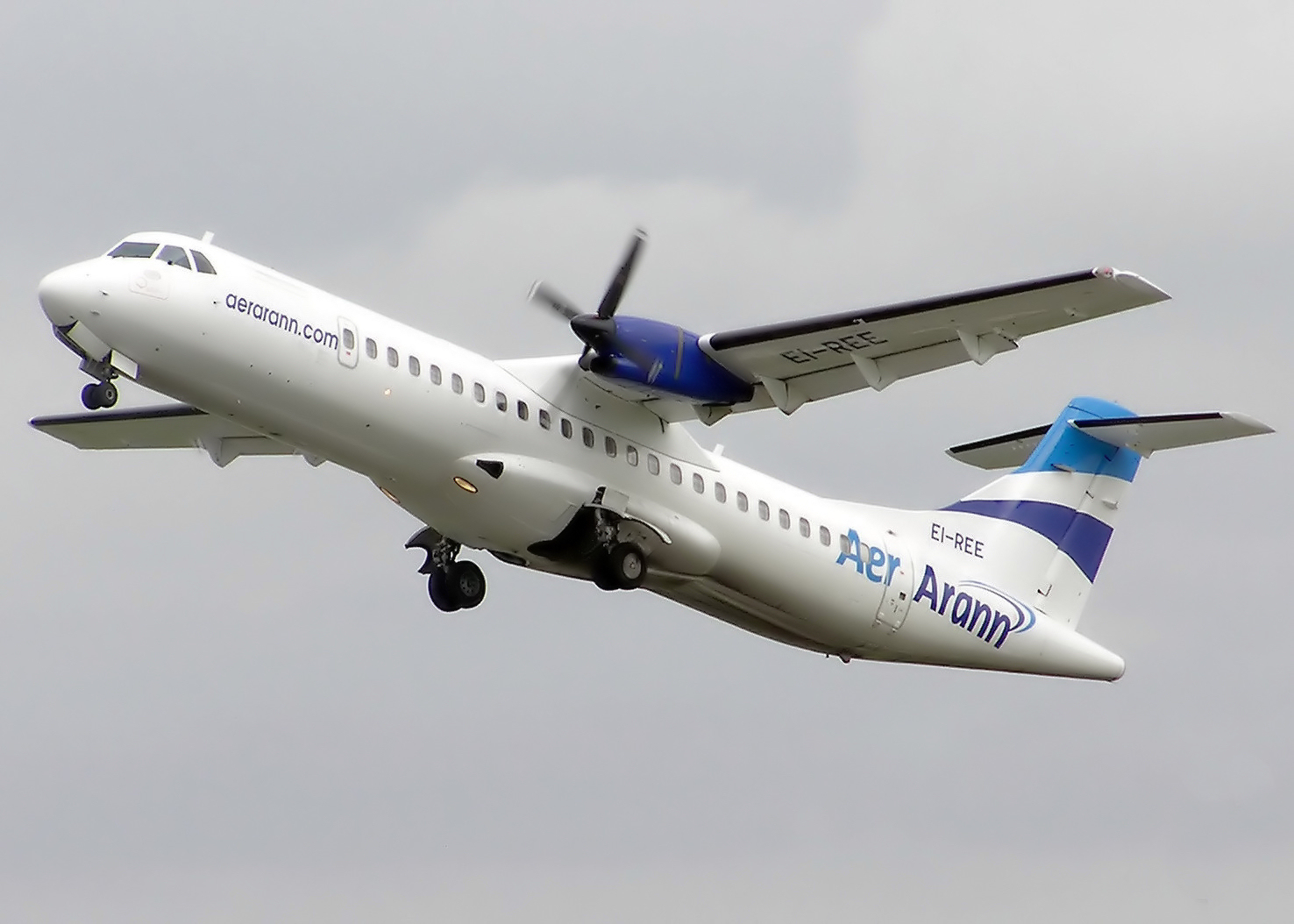ATR 72 Aircraft Overview: Atr 72 Plane

The ATR 72 is a twin-engine turboprop regional airliner manufactured by ATR, a joint venture between Airbus and Leonardo. Designed for short-haul regional routes, it has become a popular choice for airlines seeking fuel efficiency and versatility. The ATR 72 has gained recognition for its operational efficiency, reliability, and passenger comfort.
Design and Key Features
The ATR 72 is a high-wing, twin-engine turboprop aircraft featuring a T-tail configuration. Its design prioritizes fuel efficiency, low operating costs, and a spacious cabin environment. Key features include:
- Fuel Efficiency: The ATR 72’s turboprop engines are known for their fuel efficiency, particularly in comparison to jet-powered aircraft. This makes it an attractive option for airlines seeking to minimize fuel costs on short-haul routes.
- Low Operating Costs: The aircraft’s design and technology contribute to lower operating costs, including maintenance, crew, and ground handling. These cost advantages make the ATR 72 appealing to regional airlines and smaller operators.
- Spacious Cabin: The ATR 72 features a wide and comfortable cabin with a spacious aisle, offering a pleasant experience for passengers.
- Short Takeoff and Landing Capabilities: The ATR 72 is designed for short runways, allowing it to operate from smaller airports and regional destinations. This flexibility enhances its suitability for regional and feeder routes.
- High-Wing Design: The high-wing design provides passengers with excellent views from the cabin windows.
- T-Tail Configuration: The T-tail configuration, with the horizontal stabilizer mounted at the top of the vertical stabilizer, enhances aircraft stability and control.
The ATR 72’s strengths include its fuel efficiency, low operating costs, and passenger comfort. However, it also has some weaknesses, such as limited range compared to jet-powered aircraft and a lower cruising speed.
History of the ATR 72
The ATR 72’s history is closely intertwined with the development of the ATR 42, its smaller counterpart. The ATR 42 was first introduced in 1988, and the ATR 72 followed in 1989. Both aircraft were designed to cater to the growing demand for regional airliners, offering a cost-effective and efficient alternative to larger jet aircraft.
- Development and Production: The ATR 72 was developed by ATR, a joint venture between French aerospace manufacturer Aérospatiale (later Airbus) and Italian aerospace company Aeritalia (later Leonardo). The first ATR 72 prototype made its maiden flight in 1989, and the aircraft entered service in 1990.
- Significant Milestones: Over the years, the ATR 72 has undergone several updates and modifications, resulting in various variants with enhanced capabilities and performance. Some significant milestones include:
- ATR 72-200: This was the initial version of the aircraft, introduced in 1990.
- ATR 72-500: Introduced in 2007, the ATR 72-500 featured a new wing design and improved avionics, leading to better performance and fuel efficiency.
- ATR 72-600: The ATR 72-600, launched in 2010, incorporated further enhancements, including a new cockpit with a full glass instrument panel, a redesigned cabin interior, and improved engine performance.
ATR 72 Variants
The ATR 72 has been produced in several variants, each tailored to meet specific requirements. The most notable variants include:
- ATR 72-200: The initial version, introduced in 1990, featuring a capacity of 66-74 passengers.
- ATR 72-500: Introduced in 2007, the ATR 72-500 featured a new wing design, improved avionics, and a capacity of 68-74 passengers.
- ATR 72-600: The latest variant, launched in 2010, incorporates a new cockpit, a redesigned cabin interior, and improved engine performance. The ATR 72-600 has a capacity of 68-74 passengers.
The ATR 72 variants have evolved to meet the evolving needs of airlines and the aviation industry. Each variant has incorporated improvements in performance, efficiency, and passenger comfort, making the ATR 72 a versatile and reliable aircraft for regional operations.
ATR 72 Operations and Applications
_ATR.72-212A(500)_FlyFireFly_TLS_30AUG11_(6097869500)_(cropped).jpg/1200px-F-WWEZ_(948)_ATR.72-212A(500)_FlyFireFly_TLS_30AUG11_(6097869500)_(cropped).jpg)
The ATR 72 is a versatile aircraft designed for short-haul regional operations. Its performance characteristics, including its range, speed, and passenger capacity, make it suitable for a wide range of applications within the aviation industry.
Operational Characteristics, Atr 72 plane
The ATR 72 is known for its efficiency and performance in short-haul operations. It boasts a maximum range of approximately 1,500 kilometers (930 miles), a cruising speed of around 500 kilometers per hour (310 miles per hour), and a typical passenger capacity of 70-78 seats. Its turboprop engines offer fuel efficiency, making it an economical choice for airlines operating on regional routes.
Applications in the Aviation Industry
The ATR 72’s versatility has made it a popular choice for various applications within the aviation industry.
Regional Air Travel
The ATR 72 is widely used in regional air travel, connecting smaller cities and towns to major hubs. Its short takeoff and landing capabilities (STOL) allow it to operate from smaller airports with limited runway lengths, making it suitable for underserved communities.
Cargo Transport
The ATR 72 can be configured for cargo transport, carrying up to 7.5 tons of freight. Its ability to access remote locations makes it ideal for transporting goods to areas not served by larger aircraft.
Special Missions
The ATR 72’s versatility extends to special missions, including:
- Search and Rescue: Its STOL capabilities and large cargo capacity make it suitable for search and rescue operations.
- Medical Evacuation: Its ability to access remote areas and its spacious cabin allow for the transportation of medical patients.
- Surveillance and Patrol: Its adaptability allows for the installation of specialized equipment for surveillance and patrol missions.
Economic Viability
The ATR 72’s economic viability is driven by its fuel efficiency, lower maintenance costs compared to larger jets, and its ability to operate profitably on routes with lower passenger demand.
Fuel Efficiency
The ATR 72’s turboprop engines consume significantly less fuel compared to jet engines, contributing to lower operating costs. This fuel efficiency is particularly advantageous for short-haul routes where fuel consumption is a major factor in profitability.
Maintenance Costs
The ATR 72’s design and construction focus on simplicity and reliability, resulting in lower maintenance costs compared to larger jets. This lower maintenance burden contributes to its overall economic viability.
Passenger Demand
The ATR 72’s smaller size makes it suitable for routes with lower passenger demand, where larger jets might not be economically viable. Its ability to operate profitably on these routes expands its market reach and enhances its economic viability.
ATR 72 Safety and Performance

The ATR 72, a twin-engine turboprop aircraft, has established a reputation for safety and reliability in regional aviation. While its safety record is generally positive, there have been notable incidents and accidents that have prompted investigations and improvements in safety protocols and aircraft design. The ATR 72’s performance in various weather conditions and operational environments, as well as the impact of technological advancements on its safety and performance, are critical aspects to consider.
Safety Record and Incidents
The ATR 72 has a generally good safety record, with a low rate of accidents compared to other aircraft types. However, there have been several significant incidents and accidents involving ATR 72 aircraft, prompting investigations and safety recommendations.
- In 2014, an ATR 72-600 operated by TransAsia Airways crashed in Taiwan, killing 43 people. The investigation revealed that the pilot’s decision to fly in adverse weather conditions, combined with a potential engine failure, contributed to the accident.
- In 2015, an ATR 72-212A operated by Germanwings crashed in the French Alps, killing all 150 people on board. The investigation concluded that the co-pilot deliberately crashed the aircraft, highlighting the importance of mental health and pilot training in aviation safety.
These incidents, along with others, have led to the implementation of safety improvements, including enhanced pilot training programs, stricter maintenance procedures, and advancements in aircraft systems and technologies.
Performance in Different Weather Conditions
The ATR 72 is designed to operate in a wide range of weather conditions, including moderate icing and turbulence. Its turboprop engines provide good performance in high-altitude and hot-and-humid environments.
- High-Altitude Performance: The ATR 72’s turboprop engines provide efficient performance at high altitudes, allowing it to operate in mountainous regions and at high-altitude airports.
- Hot-and-Humid Conditions: The aircraft’s powerful engines and efficient wing design enable it to maintain good performance in hot-and-humid climates, where air density is lower.
- Icing Conditions: The ATR 72 is equipped with de-icing systems and anti-icing measures to mitigate the risks associated with icing conditions. These systems help prevent ice buildup on the wings and other critical surfaces, ensuring safe flight operations.
Impact of Technological Advancements
Technological advancements have significantly improved the safety and performance of the ATR 72. These include:
- Advanced Avionics Systems: The ATR 72 is equipped with modern avionics systems, including glass cockpits, flight management systems (FMS), and ground proximity warning systems (GPWS). These systems enhance situational awareness, reduce pilot workload, and improve safety.
- Engine Upgrades: Newer ATR 72 models feature upgraded turboprop engines, such as the Pratt & Whitney PW127M, which provide improved fuel efficiency, reduced noise levels, and enhanced reliability.
These technological advancements have contributed to the ATR 72’s continued safety and performance, making it a reliable and efficient aircraft for regional operations.
Atr 72 plane? Itu mah pesawatnya si om-om yang suka ngelawak, bukan? Kayak lagi ngomongin siapa yang jadi moderator debat capres, who is moderating the next presidential debate , eh, malah ngomongin pesawat. Tapi, kalo urusan pesawat, gue mah paling suka liat si Atr 72, keren gitu, kayak lagi ngeliat burung terbang.
Ngomongin ATR 72, inget deh sama pesawat-pesawat yang suka ngebut di langit. Eh, ngomong-ngomong soal ngebut, inget juga sama debat calon presiden nih. Kayak mau ngebut ngejar waktu, padahal kan penting banget buat ngebahas visi misi. Kalo penasaran sama tanggal-tanggal debatnya, bisa dicek di sini: presidential debate dates.
Ya, pokoknya sama kayak ATR 72, debat calon presiden juga harus jalan terus, gak boleh berhenti, biar rakyat makin yakin sama pilihannya.
